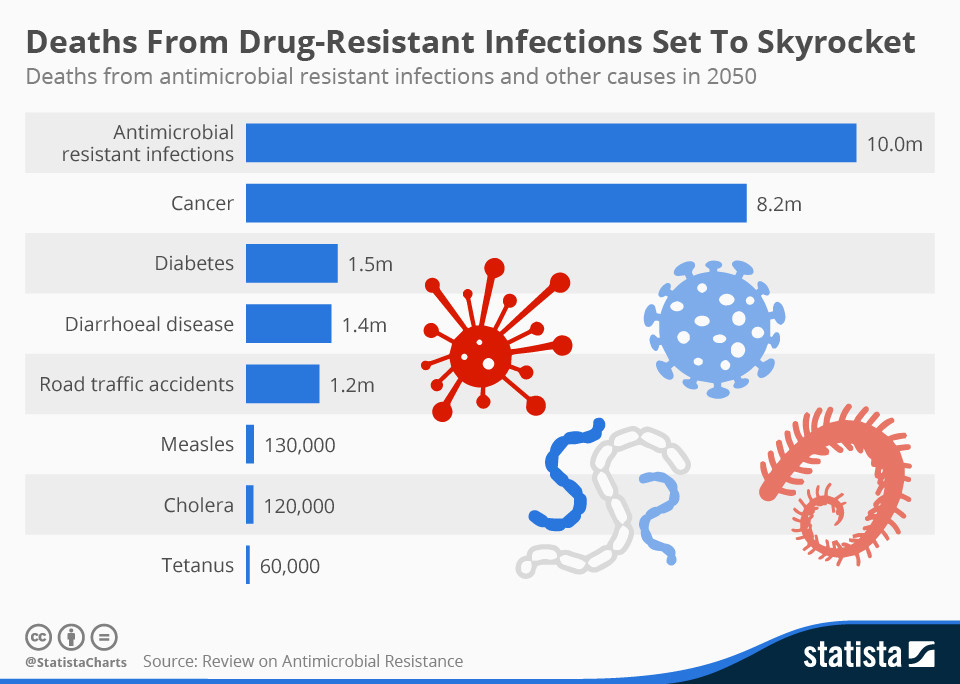The History of Medicine:
- 2000 B.C.—Here, eat this root.
- 1000 A.D.—That root is heathen. Here, say this prayer.
- 1850 A.D.—That prayer is superstition. Here, drink this potion.
- 1920 A.D.—That potion is snake oil. Here, swallow this pill.
- 1945 A.D.—That pill is ineffective. Here, take this penicillin.
- 1955 A.D.—Oops … bugs mutated. Here, take this tetracycline.
- 1960–1999 A.D.—39 more “oops.”… Here, take this more powerful antibiotic.
- 2000 A.D.—The bugs have won! Here, eat this root.
—Anonymous, as cited by the World Health Organization (WHO, 2000a)

